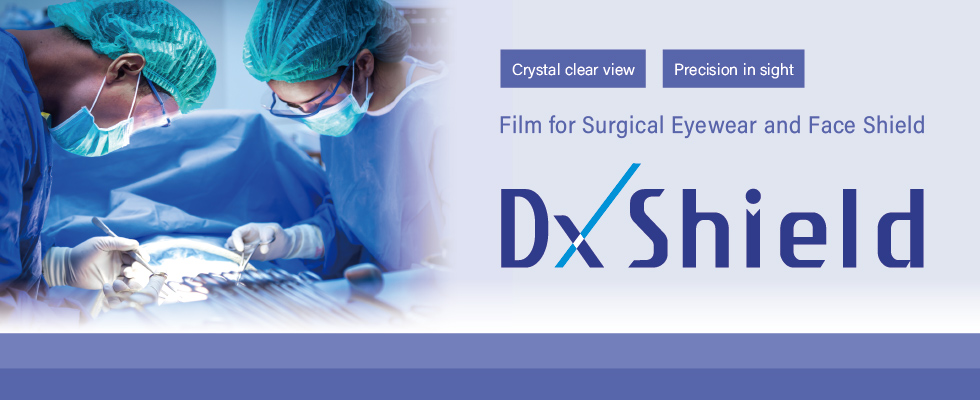- What is DxShield®?
- Features of DxShield®
- Reduce fatigue by wearing an eye shield
- Product information
1.What is DxShield®?
Do you experience any of the difficulties below?
Tired Eyes
Wearing the equipment for many hours in medical situations causes eyestrain.
It is difficult to read characters and look at screens.
Light Reflection Interferes with Your Vision
Glare from the film disrupts your work.
Your glasses and face mask reflect on the shield.
The Shield Film Fogs Up
Moisture in exhaled breath sticks to the shield, fogging it up and blocking your view.
DxShield is an anti-reflective, highly transparent film suitable for medical shields. It is recommended for use in medical settings, especially operating rooms, where precision is required and clear visibility is essential for long-term wear.
Dexerials has applied its anti-reflection technology for displays to develop a film that can be used as a shielding material.
■ Conventional film (PC*1 *2)
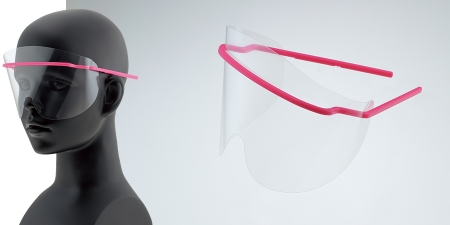
■ DxShield*1 *3
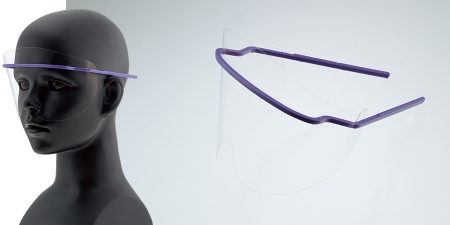
- *1 It uses a commercially available frame for eyeshields.
- *2 Polycarbonate film
- *3 ME2-C1500 (Polycarbonate base material)
2.Features of DxShield®
DxShield® has an anti-reflection layer on both sides of the film. This anti-reflection layer features nano-level tiny convexes arranged on the surface, which can be seen under magnification. It is called a moth-eye structure because it resembles the surface of a moth's eyes.
Dexerials' moth-eye type anti-reflection film provides anti-reflectivity to displays in the field of electronics field. Dexerials Corporation has applied this technology for medical shield applications.
■Product Structure

Difficult to fog up
Fogging of the shield is caused by water vapor contained in exhaled air sticking to the shield surface as small water droplets.
Because DxShield® uses a hydrophilic resin to form the moth-eye structure, moisture attached to the surface does not spread or wet the surface quickly, making it difficult for the film to fog up.
This feature keeps the shield fog-free from the inside, providing a clear view during medical diagnosis and treatment.
■Image of water droplets on the film surface
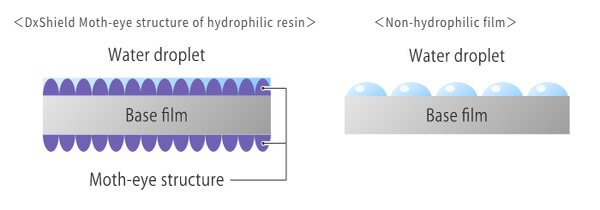
■Anti-fogging evaluation method and evaluation results
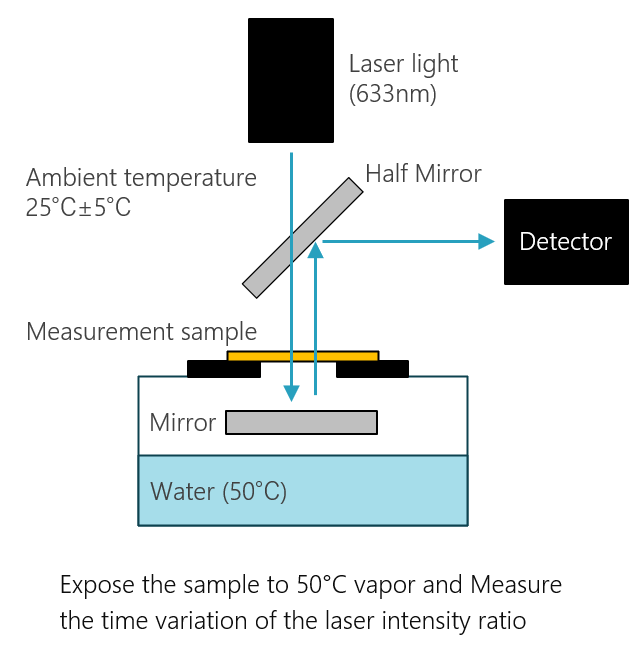
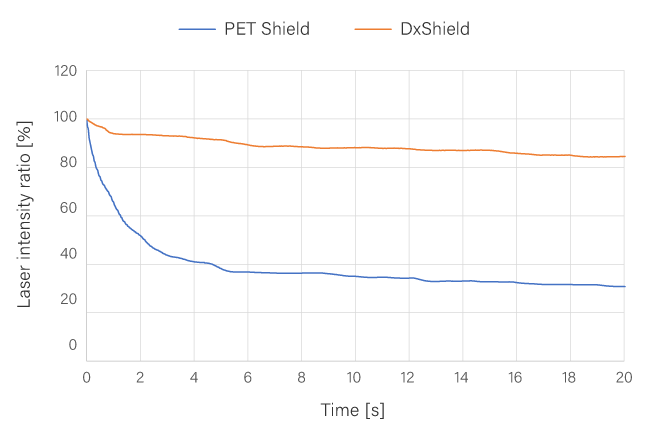
- * PET shield: Our conventional product
*Pre-treated
- Immersed in pure water for 2 hours
・Take it out and wipe off any water droplets
- Leave it indoors for 12 to 24 hours
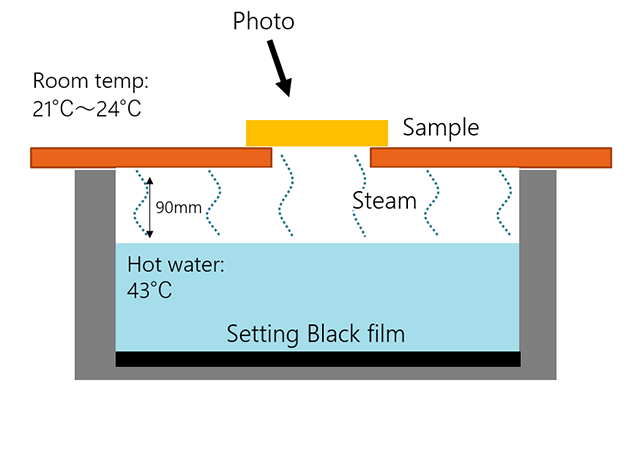
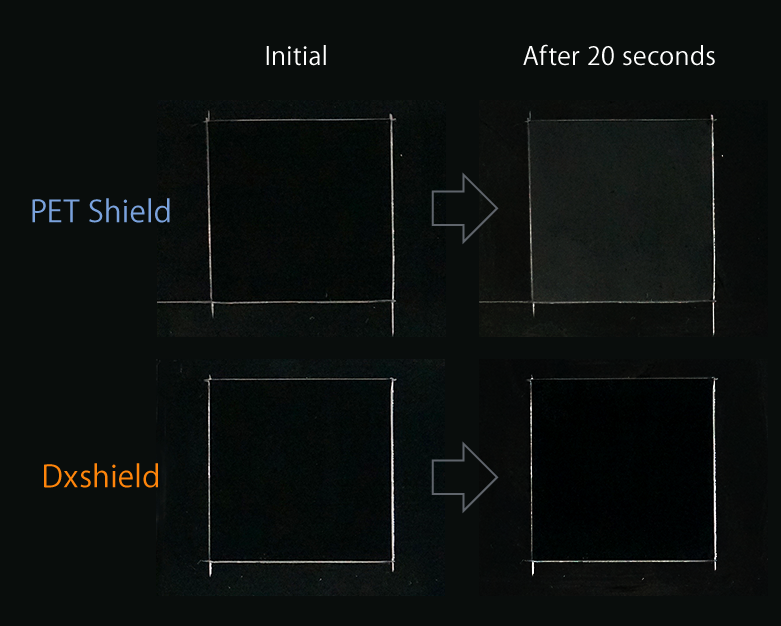
- * PET shield: Our conventional product
*Pre-treated
- Immersed in pure water for 2 hours
・Take it out and wipe off any water droplets
- Leave it indoors for 12 to 24 hours
Low reflection / High transmission
DxShield film has convexes smaller than the wavelengths of visible light (380 to 780 nm) to make light reflection as low as possible.
Light reflection occurs between the air and a light-receiving substance that has a refractive index different to that of air. The refractive index of the moth-eye structure changes continuously so almost no light is reflected back to your eyes.
■Principle of Reflection Reduction | Light Transmission Image
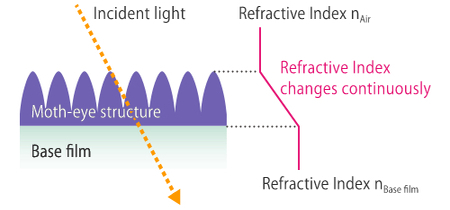
■Optical Properties of Moth-eye Type Film
| Base material film | PC | PET film | (Reference value) PET |
||
|---|---|---|---|---|---|
| Structure | 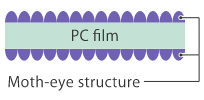 |
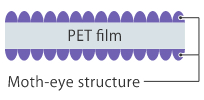 |
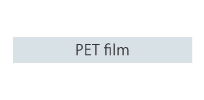 Base material only |
||
| Product name | ME2-C1500 | ME2-M1000 | ME2-M1800 | - | |
| Thickness of base material | mm | 0.16 | 0.11 | 0.19 | 0.13 |
| Luminous reflectance*1 | % | 0.4 | 0.7 | 0.8 | 8.4 |
| Total transmittance*2 | % | 99.3 | 98.9 | 98.6 | 90.6 |
| Haze*2 | % | 0.2 | 0.2 | 0.3 | 1.3 |
- *1
Test conditions for luminous reflectance
Instrument:V-650 (JASCO Corp.)
Incident angle:5° (Reflection),0° (Transmission)
Light source:D65 - *2
Test conditions for haze values and total transmittance
Instrument:HM-150(Murakami Color Research Laboratory)
Testing standards:JIS K7136 (ISO 14782 )(Haze), JIS K7361 (ISO 13468-1 )(Transmittance) - * If the film surface is scratched or stained, it may not meet the above product characteristics.
3. Reduce fatigue by wearing eye shields
Eye protection such as shields contributes to medical safety by preventing droplet infection through the eyes of medical professionals. However, in reality, there are many cases where they are not worn due to reasons such as discomfort when wearing them, scattered light, and fatigue caused by obstructed vision.
It has been suggested that eye shields using moth-eye type film can help reduce visual fatigue caused by wearing them compared to conventional products. It is hoped that this will increase the rate at which medical professionals wear eye shields, contribute to improved medical safety, and lead to the creation of more comfortable workplaces.
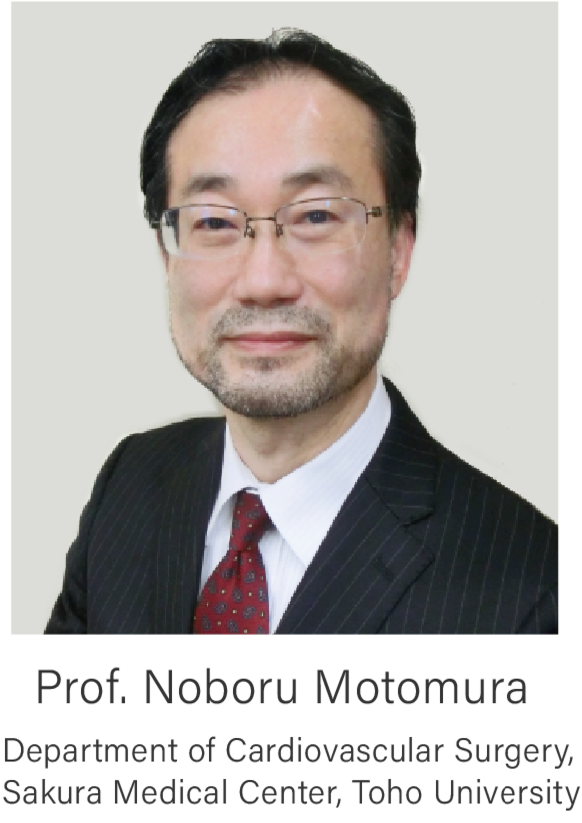
■ Vision before and after wearing the eye shield
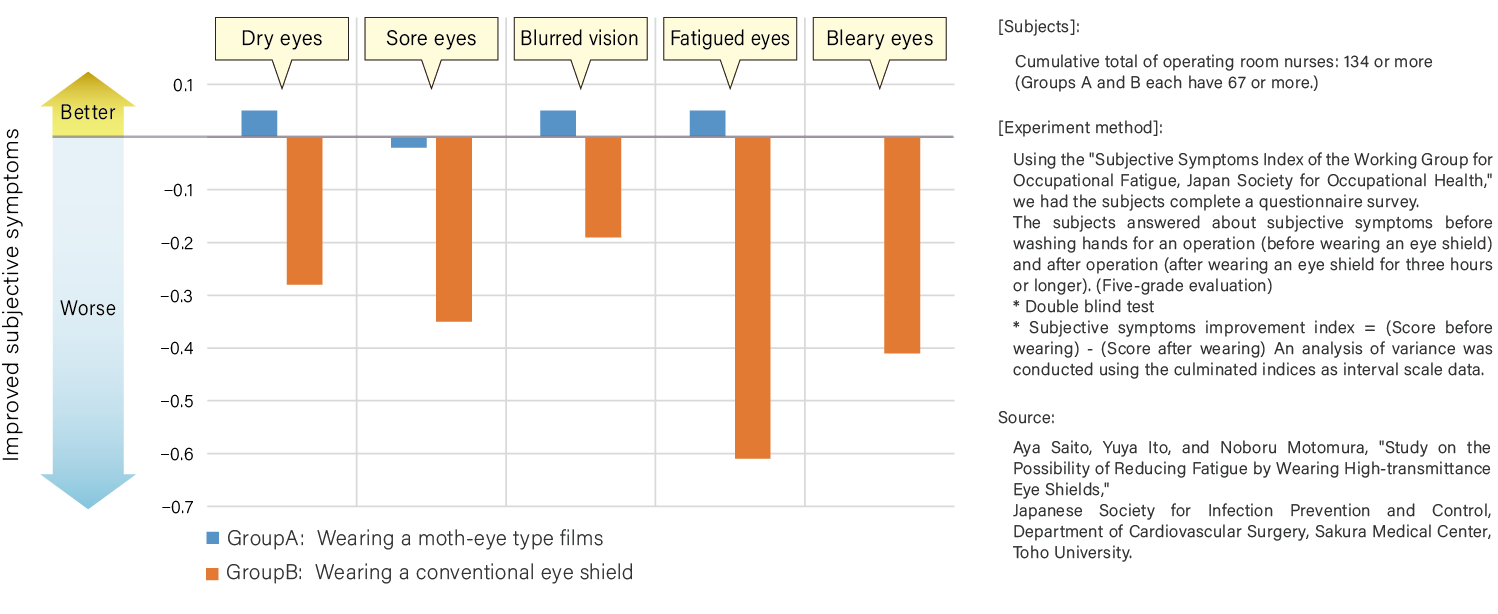
4.Product information
For more information about this product, please visit the product information page at the link below.
Medical equipment manufacturers use DxShield® as a film for eye shields and face shields.
*DxShield is registered trademark of Dexerials Corporation in Japan and other countries.


